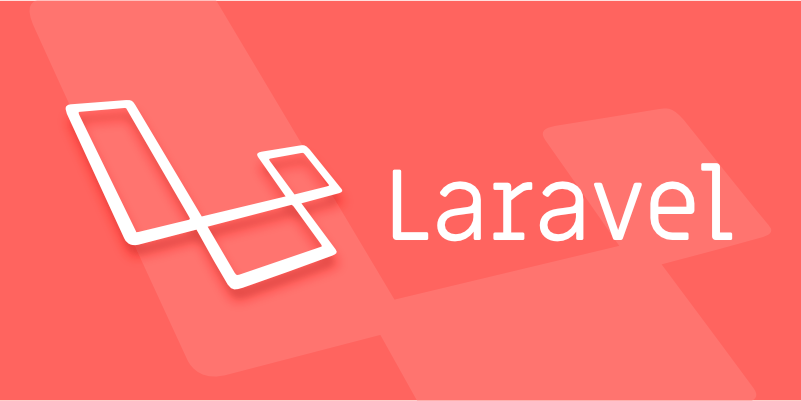Handling file uploads securely in Laravel
Jul 02, 2025 pm 03:12 PMSecurity issues should be paid attention to when uploading Laravel files. 1. You must set allowable file types and size limits, use the image and mimes rules to verify file formats and prevent masquerading files. 2. Rename the file using uniqid() or UUID to avoid conflict and guess attacks and prevent path traversal risks. 3. Make sure that the upload directory is not in the web root directory, disable script execution permissions in the server configuration or return file contents through the controller. 4. Optionally use third-party storage such as AWS S3 and Alibaba Cloud OSS to improve security, and achieve better access control and high availability through Flysystem configuration drivers, but the deployment complexity and cost need to be weighed.

Laravel provides convenient file upload functionality, but if you don't pay attention to security issues, it can lead to serious vulnerabilities. When processing file uploads, you cannot rely solely on front-end verification, and the back-end must have a strict inspection mechanism.

1. Set allowed file types and size limits
When a user uploads a file, the most common risk is malicious file injection, such as uploading a .php file to disguise itself as an image. To avoid this, the allowed file extensions and MIME types should be specified explicitly.

$request->validate([
'avatar' => 'required|image|mimes:jpeg,png,jpg,gif|max:2048',
]); The above code means that only image files in jpeg, png, jpg, and gif formats are accepted, and the size is not more than 2MB. Although mimes checks can prevent most of the disguised files, it is best to combine image rules to further ensure that they are real images.
In addition, a finer granular control method can be used, such as obtaining the original extension through getClientOriginalExtension() , and then manually determining whether it is on the whitelist.

2. Use random file names to avoid conflicts and guess attacks
If you use the file name uploaded by the user directly, it may cause problems such as path crossing and overwriting existing files. It is recommended to rename the uploaded file to a unique identifier:
$fileName = uniqid() . '.' . $file->getClientOriginalExtension(); $file->storeAs('uploads', $fileName, 'public');
This can effectively prevent file name contamination or path traversal attacks (such as uploading files named ../../evil.php ). At the same time, it can also avoid overwriting problems caused by uploading files of the same name by multiple users.
If you have higher security requirements, you can use
hash_file()to hash the file content as the file name, or use UUID instead ofuniqid().
3. Avoid directly executing content in the upload directory
By default, Laravel stores uploaded files in storage/app/public directory and soft links to public/storage . Although this is easy to access, it may be executed if the user uploads an executable script (such as .php ) and the server is not configured properly.
To avoid this problem:
- Make sure the upload directory is not under the web root directory.
- Disable script execution permissions in the upload directory in Nginx or Apache.
- It is possible to consider storing sensitive files in non-public directories and returning contents through the controller.
For example, in Apache, you can prohibit the execution of PHP files through .htaccess :
<Files "*.php">
Order Allow,Deny
Deny from all
</Files>4. Use third-party storage drivers to improve security (optional)
If you are worried that the local file system is vulnerable to attacks, you can consider using cloud storage services (such as AWS S3 and Alibaba Cloud OSS) to save users' uploaded files.
Laravel supports Flysystem expansion packages and is very simple to configure. Just modify the filesystems.php configuration file, change the default driver s3 , and fill in the corresponding key.
Benefits include:
- Files are not exposed to public network directories
- Better access control and anti-theft link settings
- Automatic backup and high availability
Of course, this also increases deployment complexity and cost, and whether it adopts depends on the security requirements and budget of the project.
Basically that's it. File upload may seem simple, but if you are not careful, you will leave hidden dangers. From verification format, changing file name, to restricting execution permissions, every step cannot be omitted.
The above is the detailed content of Handling file uploads securely in Laravel. For more information, please follow other related articles on the PHP Chinese website!

Hot AI Tools

Undress AI Tool
Undress images for free

Undresser.AI Undress
AI-powered app for creating realistic nude photos

AI Clothes Remover
Online AI tool for removing clothes from photos.

Clothoff.io
AI clothes remover

Video Face Swap
Swap faces in any video effortlessly with our completely free AI face swap tool!

Hot Article

Hot Tools

Notepad++7.3.1
Easy-to-use and free code editor

SublimeText3 Chinese version
Chinese version, very easy to use

Zend Studio 13.0.1
Powerful PHP integrated development environment

Dreamweaver CS6
Visual web development tools

SublimeText3 Mac version
God-level code editing software (SublimeText3)

Hot Topics
 How to test Laravel API interface?
May 22, 2025 pm 09:45 PM
How to test Laravel API interface?
May 22, 2025 pm 09:45 PM
Efficient methods for testing Laravel API interfaces include: 1) using Laravel's own testing framework and third-party tools such as Postman or Insomnia; 2) writing unit tests, functional tests and integration tests; 3) emulating a real request environment and managing database status. Through these steps, the stability and functional integrity of the API can be ensured.
 How to customize Laravel's user authentication logic?
May 22, 2025 pm 09:36 PM
How to customize Laravel's user authentication logic?
May 22, 2025 pm 09:36 PM
Custom Laravel user authentication logic can be implemented through the following steps: 1. Add additional verification conditions when logging in, such as mailbox verification. 2. Create a custom Guard class and expand the authentication process. Custom authentication logic requires a deep understanding of Laravel's authentication system and pay attention to security, performance and maintenance.
 How to create Laravel package (Package) development?
May 29, 2025 pm 09:12 PM
How to create Laravel package (Package) development?
May 29, 2025 pm 09:12 PM
The steps to create a package in Laravel include: 1) Understanding the advantages of packages, such as modularity and reuse; 2) following Laravel naming and structural specifications; 3) creating a service provider using artisan command; 4) publishing configuration files correctly; 5) managing version control and publishing to Packagist; 6) performing rigorous testing; 7) writing detailed documentation; 8) ensuring compatibility with different Laravel versions.
 Laravel integration with social media login (OAuth)
May 22, 2025 pm 09:27 PM
Laravel integration with social media login (OAuth)
May 22, 2025 pm 09:27 PM
Integrating social media login in the Laravel framework can be achieved by using the LaravelSocialite package. 1. Install the Socialite package: use composerrequirelaravel/socialite. 2. Configure the service provider and alias: add relevant configuration in config/app.php. 3. Set API credentials: Configure social media API credentials in .env and config/services.php. 4. Write controller method: Add redirection and callback methods to handle social media login process. 5. Handle FAQs: Ensure user uniqueness, data synchronization, security and error handling. 6. Optimization practice:
 How to implement password reset function in Laravel?
May 22, 2025 pm 09:42 PM
How to implement password reset function in Laravel?
May 22, 2025 pm 09:42 PM
Implementing password reset function in Laravel requires the following steps: 1. Configure the email service and set relevant parameters in the .env file; 2. Define password reset routes in routes/web.php; 3. Customize email templates; 4. Pay attention to email sending problems and the validity period of tokens, and adjust the configuration if necessary; 5. Consider security to prevent brute-force attacks; 6. After the password reset is successful, force the user to log out of other devices.
 Common security threats and protection measures for Laravel applications
May 22, 2025 pm 09:33 PM
Common security threats and protection measures for Laravel applications
May 22, 2025 pm 09:33 PM
Common security threats in Laravel applications include SQL injection, cross-site scripting attacks (XSS), cross-site request forgery (CSRF), and file upload vulnerabilities. Protection measures include: 1. Use EloquentORM and QueryBuilder for parameterized queries to avoid SQL injection. 2. Verify and filter user input to ensure the security of output and prevent XSS attacks. 3. Set CSRF tokens in forms and AJAX requests to protect the application from CSRF attacks. 4. Strictly verify and process file uploads to ensure file security. 5. Regular code audits and security tests are carried out to discover and fix potential security vulnerabilities.
 What is Middleware in Laravel? How to use it?
May 29, 2025 pm 09:27 PM
What is Middleware in Laravel? How to use it?
May 29, 2025 pm 09:27 PM
Middleware is a filtering mechanism in Laravel that is used to intercept and process HTTP requests. Use steps: 1. Create middleware: Use the command "phpartisanmake:middlewareCheckRole". 2. Define processing logic: Write specific logic in the generated file. 3. Register middleware: Add middleware in Kernel.php. 4. Use middleware: Apply middleware in routing definition.
 Laravel Page Cache Policy
May 29, 2025 pm 09:15 PM
Laravel Page Cache Policy
May 29, 2025 pm 09:15 PM
Laravel's page caching strategy can significantly improve website performance. 1) Use cache helper functions to implement page caching, such as the Cache::remember method. 2) Select the appropriate cache backend, such as Redis. 3) Pay attention to data consistency issues, and you can use fine-grained caches or event listeners to clear the cache. 4) Further optimization is combined with routing cache, view cache and cache tags. By rationally applying these strategies, website performance can be effectively improved.






